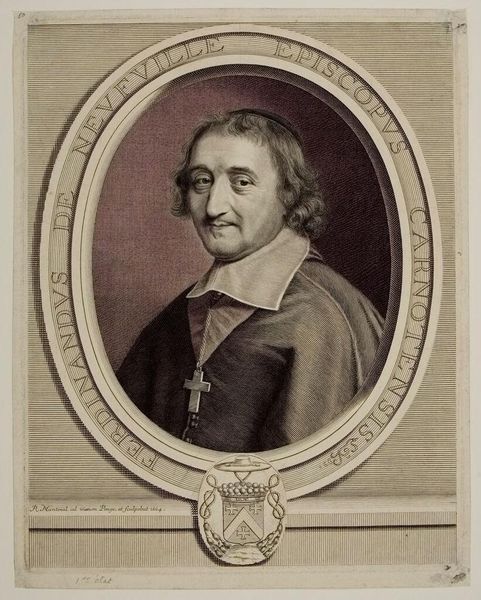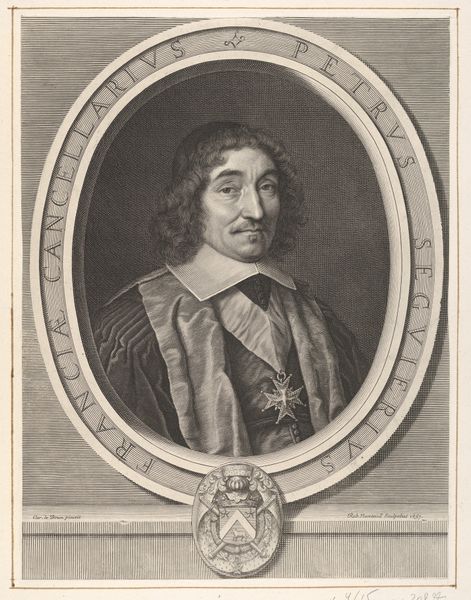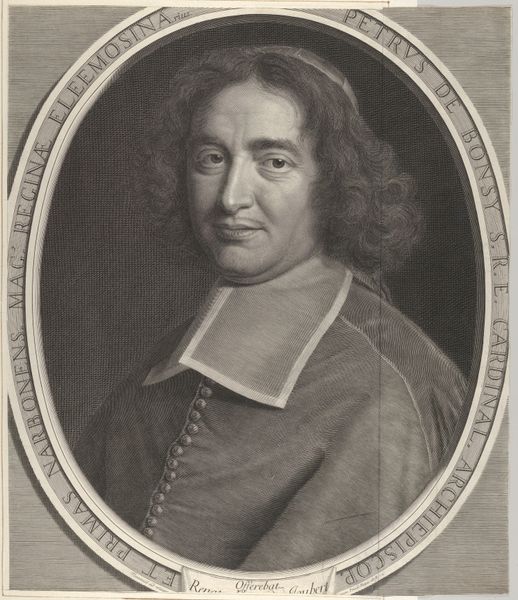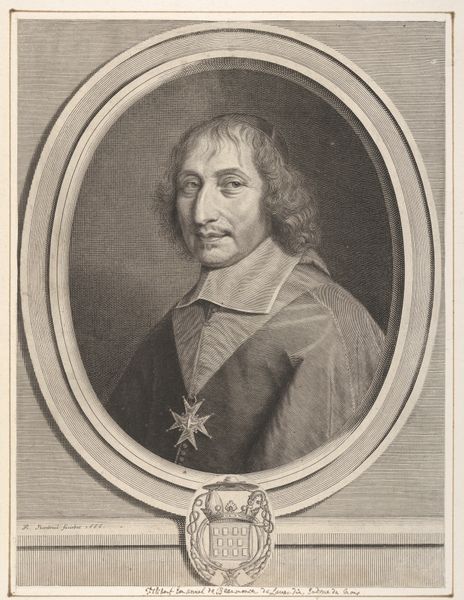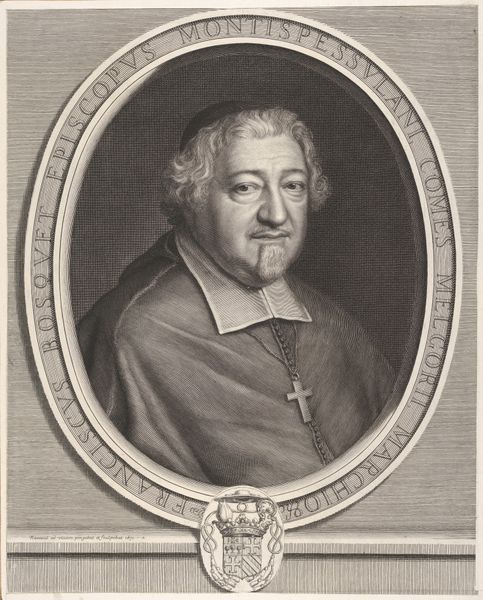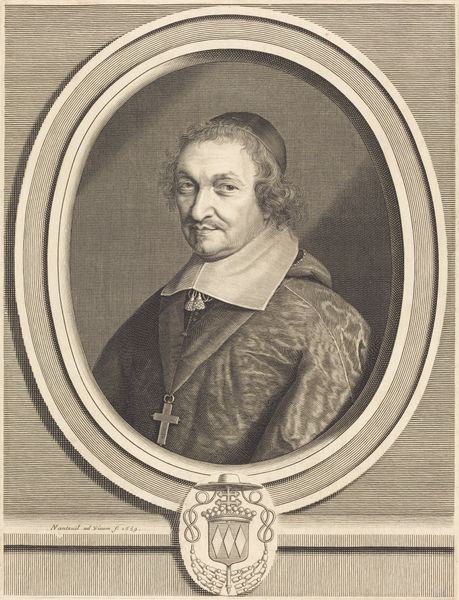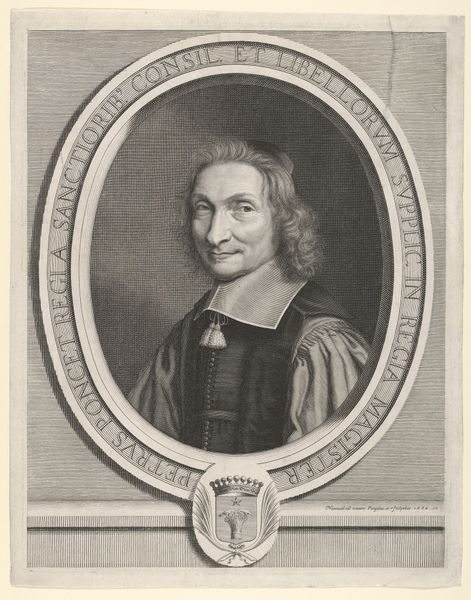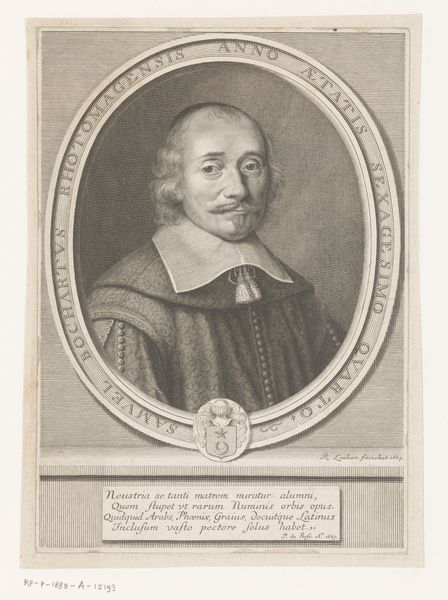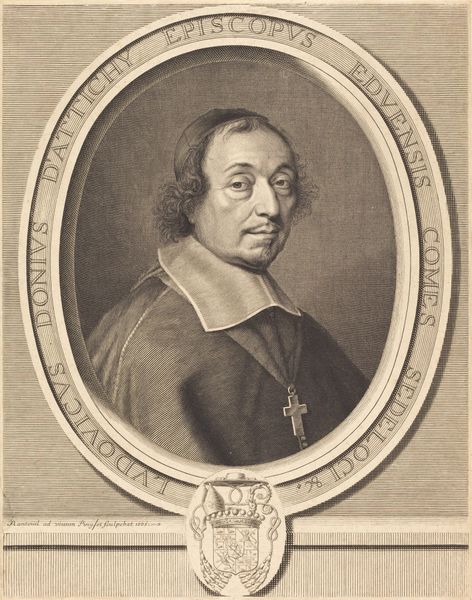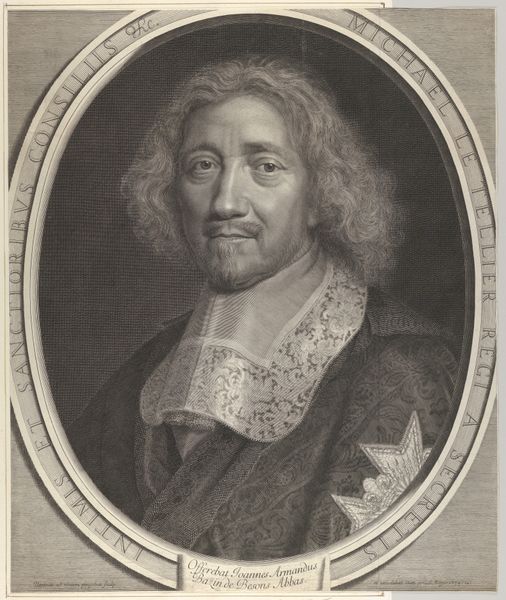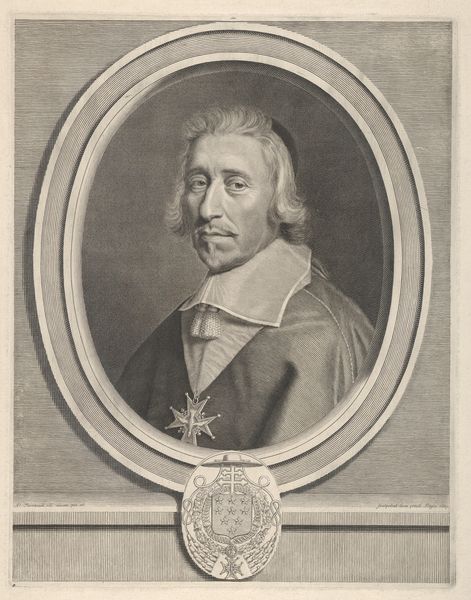
drawing, print, etching, engraving
#
portrait
#
drawing
#
medieval
#
baroque
# print
#
etching
#
figuration
#
line
#
history-painting
#
engraving
Dimensions: Sheet: 12 9/16 × 9 13/16 in. (31.9 × 25 cm)
Copyright: Public Domain
Curator: This is Robert Nanteuil’s engraving of Ferdinand de Neufville de Villeroy, dating from between 1659 and 1669. Editor: My first thought is how meticulously detailed it is. The density of lines creates incredible texture and volume, particularly in the rendering of the robes and the facial features. Curator: Nanteuil was celebrated for his skill in engraving portraits of prominent figures of the French court and clergy. Consider that this image wasn’t just art. It was a form of public relations, reinforcing the subject's status and power. Editor: Yes, and the oval frame, inscribed with the subject’s name and title, creates this immediate sense of importance. Notice how Nanteuil varies the line quality; thick, dark lines define the contours, while finer lines build up the shadows and model the form. It's all so controlled. Curator: The subject's gaze is knowing, engaging the viewer. His attire signifies his position as the Bishop of Chartres, and the inclusion of his coat of arms at the bottom further emphasizes his noble lineage and ecclesiastical authority. Editor: Absolutely. And even within the strict conventions of portraiture, there’s an incredible subtlety here. Look at the almost imperceptible smile, a hint of humanity beneath the formal presentation. Curator: Right. Nanteuil humanizes Villeroy even while presenting him as an emblem of authority. The success of such portraiture depended on capturing a likeness but also constructing an ideal image aligned with the sitter’s social standing. Editor: Seeing how he manipulated tone through such simple means—just lines, really—reveals a true mastery of the medium. The light seems to almost emanate from the paper. Curator: Looking at it this way gives us a great window into the political and social life of 17th-century France and reminds us that images are never neutral; they always play a part in shaping public perception. Editor: Indeed, and through the lens of formal analysis, the piece rewards our attention with the quiet drama and complexity it achieves within a restrained visual language.
Comments
No comments
Be the first to comment and join the conversation on the ultimate creative platform.
